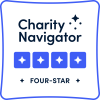January 7, 2020
As the New Year begins, so too does the General Assembly in Annapolis. Around the state of Maryland, advocates are preparing for meetings and briefings with their elected officials. Yesterday, I had the privilege to be part of the Maryland Nonprofits 2020 Legislative Preview held in partnership with Maryland Philanthropy Network. It was inspiring to hear about the many ways that the nonprofit sector is working toward greater equity and access to healthcare, transportation, high-quality education, environmental protection, arts and culture, and more.
I joined Nicholas Cohen, Executive Director of Maryland Citizens for the Arts (MCA), in leading the Enhancing Quality of Life through Arts and Culture Policy Roundtable. Happily, our colleague and partner Phoebe Stein, Executive Director of Maryland Humanities also participated in the briefing.
MCA has been working hard over the years to preserve and increase public support, and more recently to create the 2020 arts and culture strategy. Over the past five years, the Maryland arts sector has achieved strong and sustained funding. As a result, Maryland is number three in the nation in per capita investments in the arts. With support from the Governor Hogan and the General Assembly, this growth in investment has helped increase capacity and access for hundreds of arts organizations, independent artists, and educators in every county in the state. And what has been the return to Marylanders on their investment?
According to data collected by the Department of Commerce the arts sector has an economic impact of $1.4 billion, includes 17,688 full-time equivalent jobs, and creates more than $59.6 million in state and local revenue. That means that the sector returns $4 in taxes and related spending for every $1 the state spends. You would be hard pressed to find another investment that carries such a high rate of return. You can learn more about the important contributions of the arts sector in Maryland in the 2019 MSAC Annual Report.
During the 2019 General Assembly, the Maryland State Arts Council (MSAC) received a total of $24.4 million in state appropriated funds. This record appropriation reflected the Governor and General Assembly’s commitment to strong funding for the arts. We are grateful for this sustained and substantive support.
In 2020, and at the direction of MCA, we respectfully ask the Governor’s full support in funding MSAC at the mandated level for 2021 in the amount of $26,015,202. Two bills being sponsored by Delegate Brooke Leirman are also critical. The first is to eliminate the sunset provision on the Admission and Amusement tax bill and continue the Preservation of Arts and Culture Fund (POCA). The second is an Arts Capital Grant Program that designates $10 million a year to arts organizations and local arts agencies for capital improvements. Importantly, this bill provides an explicitly equitable distribution formula that will provide more opportunity for smaller organizations and those led by people of color while continuing to support the critically important larger institutions. This funding stream does not eliminate access to the Bond Bill process.
Since this is just an overview, I hope you will visit MCA’s website to learn more. It is critical that we raise our voices in Annapolis, particularly on February 13 at Maryland Arts Day. In addition to spending time with your legislators and colleagues from across the state, you really don’t want to miss the keynote address by artist, advocate, and Baker Artist Awardee Joyce J. Scott.
I hope to see you in February if not before!
Happy New Year,
Jeannie


